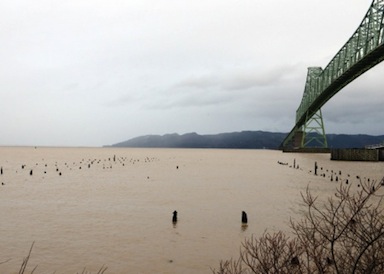The following is the text of a news release from the U.S. Coast Guard:
(SEATTLE) — The Coast Guard's two captains of the port have closed all maritime entrances in the Pacific Northwest on Friday due to severe sea conditions and large amounts of debris in the water.
In Oregon, the ports of Chetco River in Brookings; Coos Bay; Umpqua River in Winchester Bay; Siuslaw River in Florence; Yaquina Bay in Newport; Depoe Bay; Tillamook Bay in Girabaldi; and the Columbia River are closed to all traffic.
In Washington, the port of Grays Harbor in Westport; and Quillayute River in LaPush are closed.
Several storms carrying strong winds and heavy rainfall crossed the Pacific Northwest over the last week and have caused flooding and landslides in parts of Oregon and Washington. Flood waters and landslides have caused large amounts of debris to flow in the river systems causing potential problems with maritime traffic.
The Coast Guard encourages all boaters and mariners operating in the inland rivers to be aware of potential floating debris and debris below the surface and report any major issues with navigational channels to the Coast Guard.
"My job as a captain of the port is to ensure safety throughout the maritime infrastructure and part of that is to sometimes close the lanes of traffic that mariners use," said Capt. Dan Travers, commander Sector Columbia River and captain of the port for all ports in Oregon and southwest Washington. "The storms that we all experienced over the last several days have made it dangerous for mariners to transit in and out of our many rivers due to severe sea conditions and debris."
In the United States, captain of the port is a title held by a United States Coast Guard officer, usually the commander of a United States Coast Guard sector with the rank of captain (O-6). Captain of the port duties involve enforcing within their respective areas port safety and security and marine environmental protection regulations, including regulations for the protection and security of vessels, harbors, and waterfront facilities; anchorages; security zones; safety zones; regulated navigation areas; deepwater ports; water pollution; and ports and waterways safety.
For updated river entrance observations and conditions, click here.

